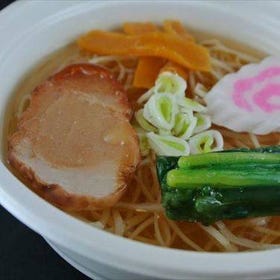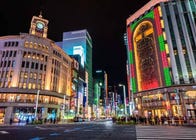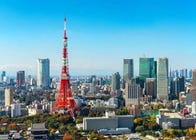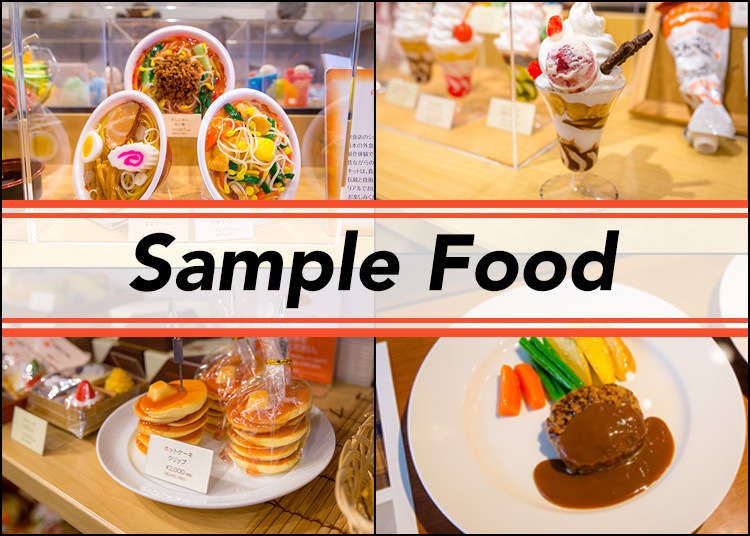
One thing that often surprises tourists on a first trip to Japan: Restaurants' storefronts and their plastic food that looks like real dishes.
A workshop to replicate food
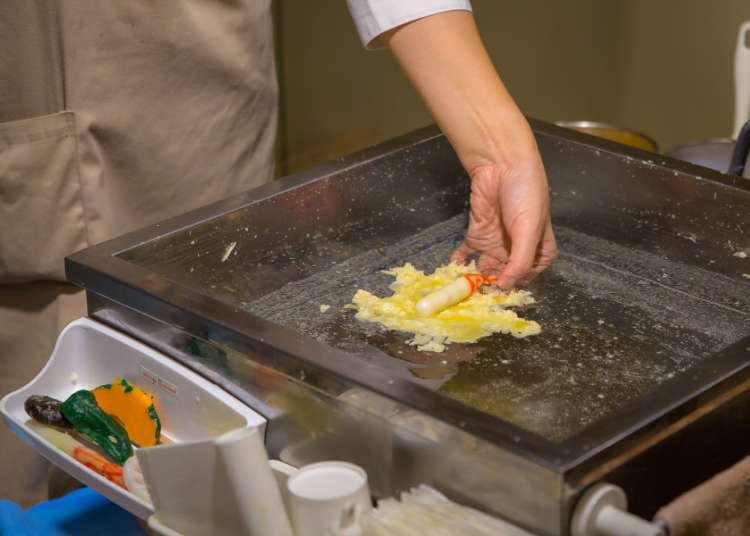
Few know how they are really made, but I had the chance to try this procedure in Kappabashi, a street dedicated to everything linked to cooking, like knives, chopsticks, pans, or even aprons. During this experience at Ganso Shokuhin Sample-ya, one of the most famous shop dedicated to plastic food, I had the chance to try two different things: first, a tempura, one of the easiest available. Then, a piece of lettuce, slightly more difficult.
Tempura: Get used to the technique
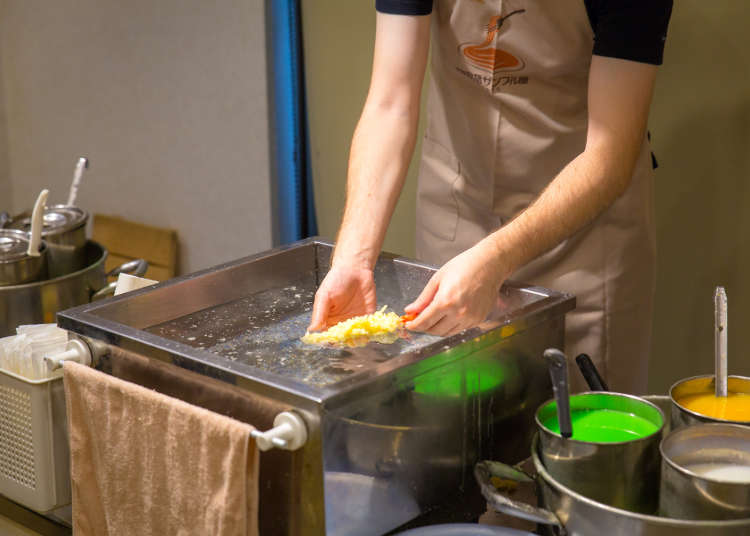
During the workshop, I created realistic food with wax, a material that was still used in this industry until thirty years ago, when it was replaced by plastic. But how does this process works? To make a tempura, colored wax is dribbled in a warm water basin to look like coating. A separately made food model, a shrimp in that case, is added on it, then the whole is gently submerged in the water and the food is shaped by hand. As it was my first try, I made my tempura slightly bigger than it should have been!
Mixing wax and creating a unique shape
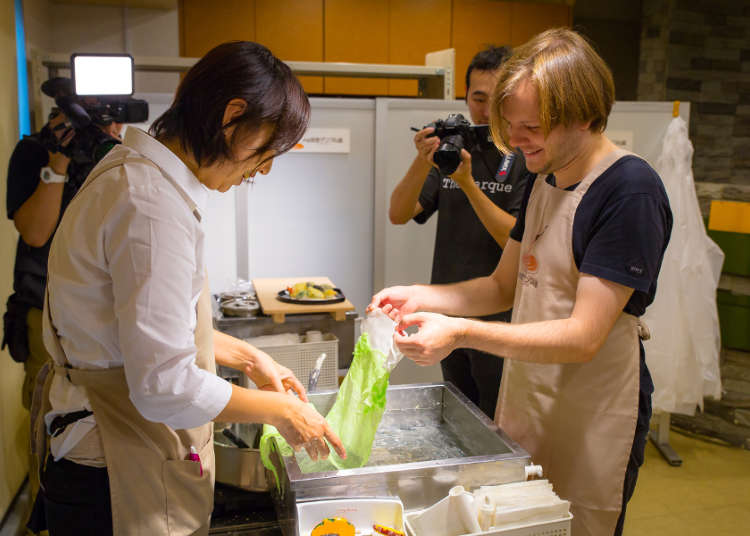
The lettuce is already more complex to make. It requires two different colors of wax: white and green, respectively for the inside and outside of the plant. After dribbling both of them to form two parallel horizontal shapes, they are submerged in the water but, this time, are moved slowly all across the basin to expand and form a large shape of a lettuce leaf. Then, the whole is folded to form the lettuce. The process requires caution during all the steps, but thanks to my teacher I was able to make it without too much trouble!
Fake food: A long history
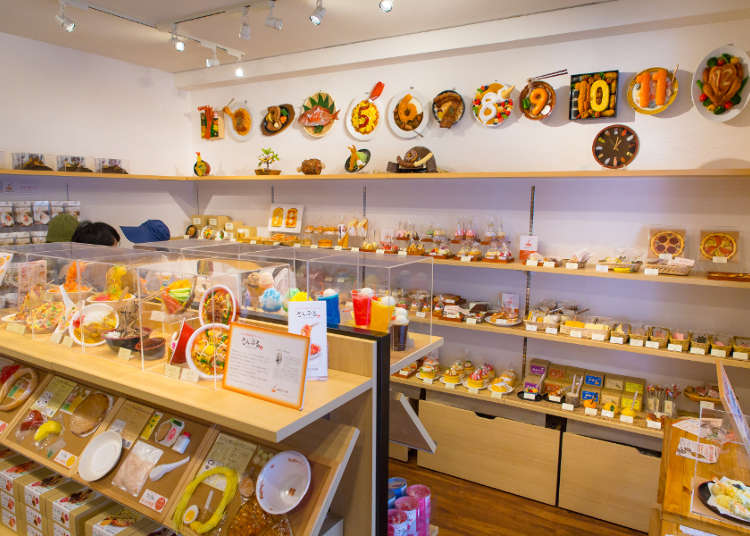
The first appearance of food samples as a way of showcasing a restaurant's menu was roughly one-hundred years ago. At that time, Western cuisine had just started to make its way on Japanese menus, the same time when restaurant floors in department stores came into fashion. At that time, they were called "okonomi shokudo", which basically translates to "canteen of your choosing", referring to the variety of dishes offered on one floor. Because the Japanese people back then didn't know the majority of dishes from abroad, restaurants began to use these very food samples to give their customers a better idea of what is being served.
Takizo Iwasaki, the inventor of food sampling, founded a company to offer this way of menu display to restaurants all around Japan - and it quickly became a huge success.
Not only about food
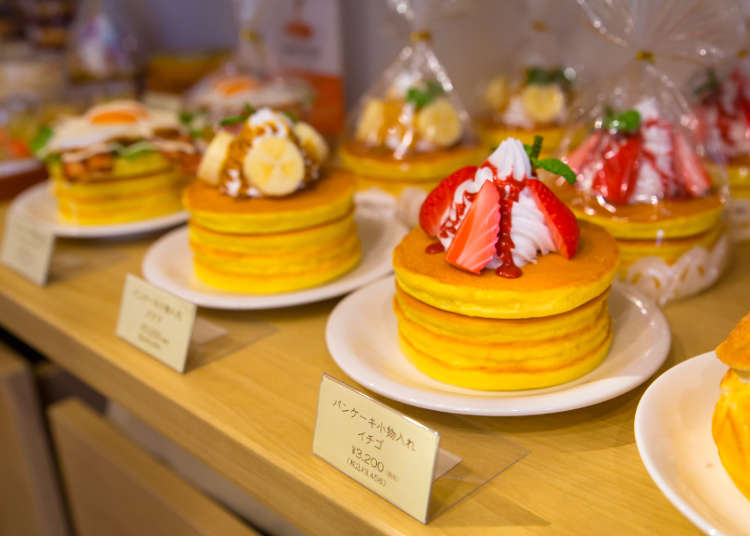
Nowadays, most manufacturers take an artisanal approach to the fake food making: the most appetizing dishes are made with a great care. Handcrafted, painted with a brush, they sometimes even look tastier than the real dishes. Some even expanded their products. In addition to food, Ganso Shokuhin Sample-ya is also doing other replicas, such as a giant 16m whale for a museum, plants or even lipsticks for department stores. The company's factory has about 130 employees. But, before their creations are sold, they need to practice for five years. Overall, the fake food experience is a really nice way to bring back an original gift from Japan!
-
Ganso Shokuhin Sample-ya元祖食品サンプル屋 合羽橋店
- Address 3-7-6 Nishi Asakusa, Taito-ku, Tokyo, 111-0035
Written by:
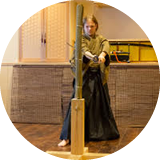
Related Activity
- Area
- Category
*Prices and options mentioned are subject to change.
*Unless stated otherwise, all prices include tax.
Limited time offer: 10% discount coupons available now!
Recommended places for you
-
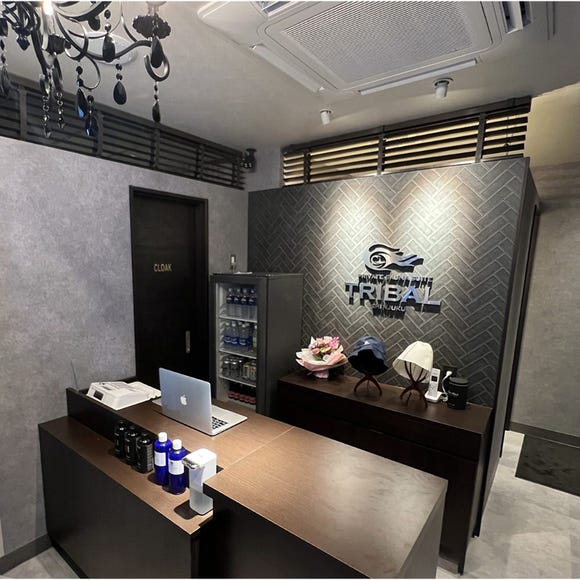
PRIVATE SAUNA SUITE TRIBAL
Culture Experience
Shinjuku
-

Sokichi
Culture Experience
Asakusa
-

Pink. ASAKUSA
Culture Experience
Asakusa
-

Japanese-style Healing Salon WANOKUNI
Culture Experience
Akihabara
-
Events

Asakusa Kimono Rental『DAIKICHI』
Culture Experience
Asakusa
-
Appealing

SAUNA PASSION
Culture Experience
Shibuya
-

15 Must-Try Restaurants in Ikebukuro: From Aged Yakiniku to All-You-Can-Eat Sushi, Plus Adorable Animal Cafés
-

The CASIO S100: How CASIO's Masterpiece Calculator Redefines Business Elegance With Japan-Made Reliability
-

15 Must-Try Sushi Restaurants in Tokyo (+5 Trending Areas to Explore for Foodies)
-

Discover Osaka Station City: A Journey Through Its Most Fascinating Spots
-

Best Things to Do in Tokyo in April 2024: Events, Festivals & More
-

Where to Eat in Shibuya: 14 Must-Try Restaurants for Yakiniku, Sushi, Izakayas, Cafes and More
-

Awesome Things to Do In Japan: Most Popular Culture Experience in Asakusa! (February 2020 Ranking)
-
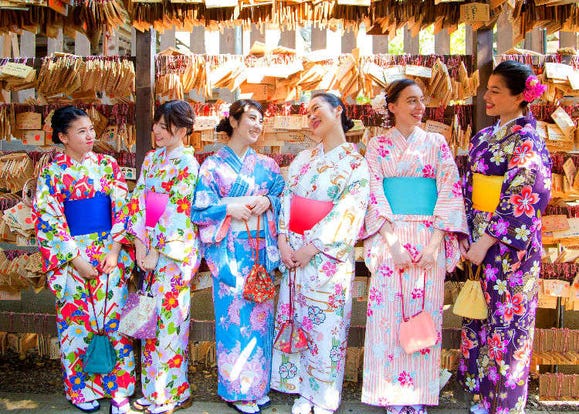
8 Popular Kimono Rental Shops in Tokyo: Enjoy a Memorable Experience in Authentic Attire
-
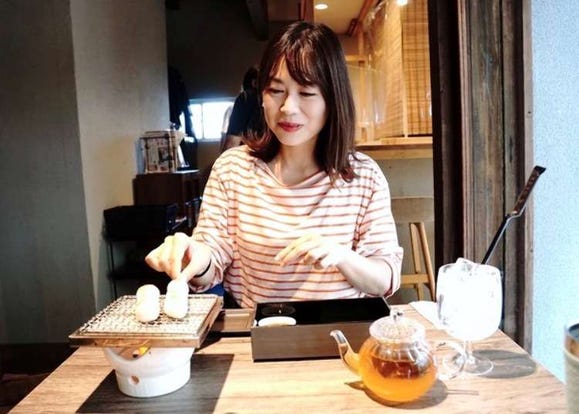
Luxury Tokyo Girls Trip: Exclusive 3-Day Itinerary & Unique Experiences by Ms. Mentaiko
-
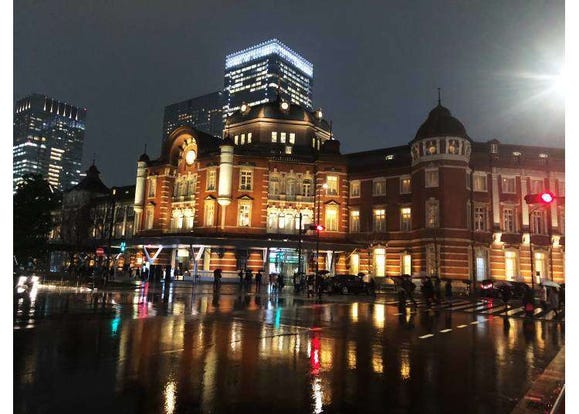
Exploring Tokyo Station: 10 Must-Visit Spots Around the Heart of Tokyo
-
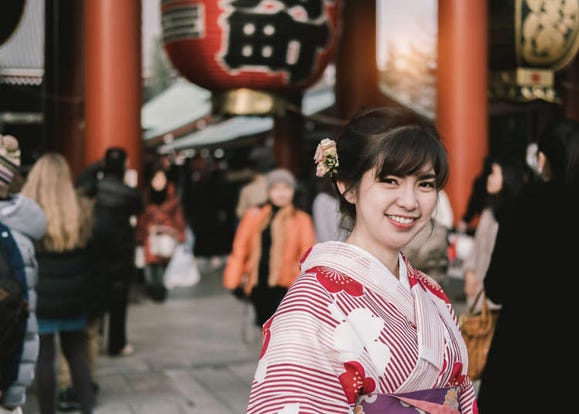
Tokyo Guide: Top 7 Most Popular Cultural Experiences in Asakusa (July 2019 Ranking)
-
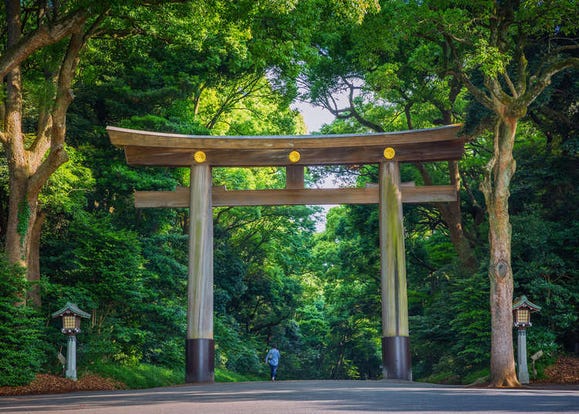
Meiji Shrine (Meiji Jingu): Exploring the Sacred Sanctuary of Peace in Bustling Tokyo
- #best ramen tokyo
- #what to buy in ameyoko
- #what to bring to japan
- #new years in tokyo
- #best izakaya shinjuku
- #things to do tokyo
- #japanese nail trends
- #what to do in odaiba
- #onsen tattoo friendly tokyo
- #daiso
- #best sushi ginza
- #japanese convenience store snacks
- #best yakiniku shibuya
- #japanese fashion culture
- #best japanese soft drinks













